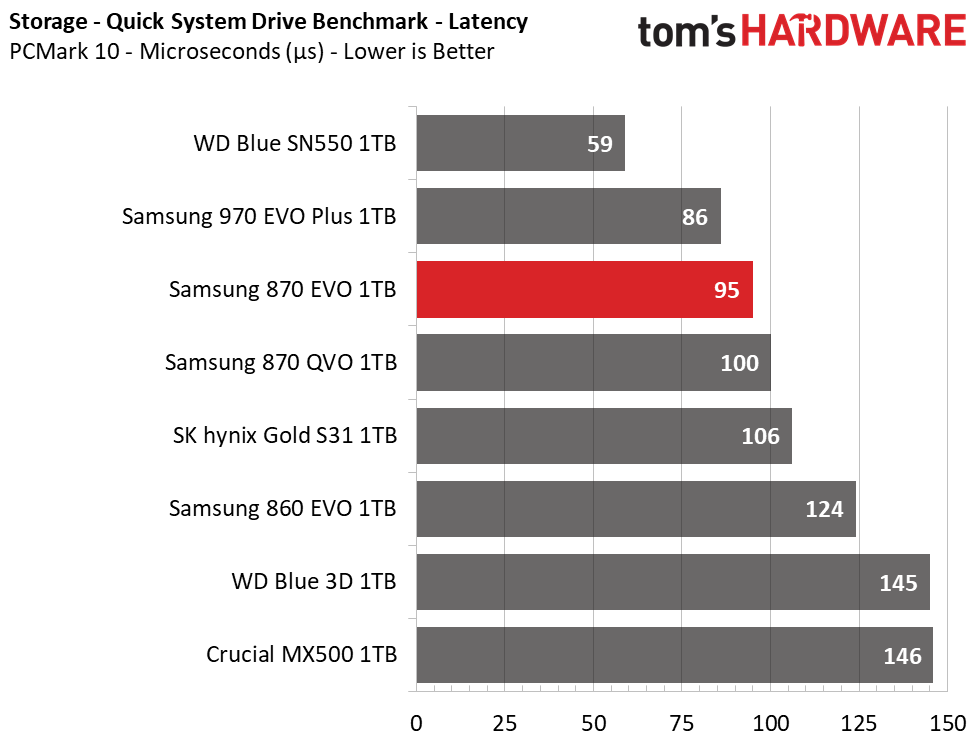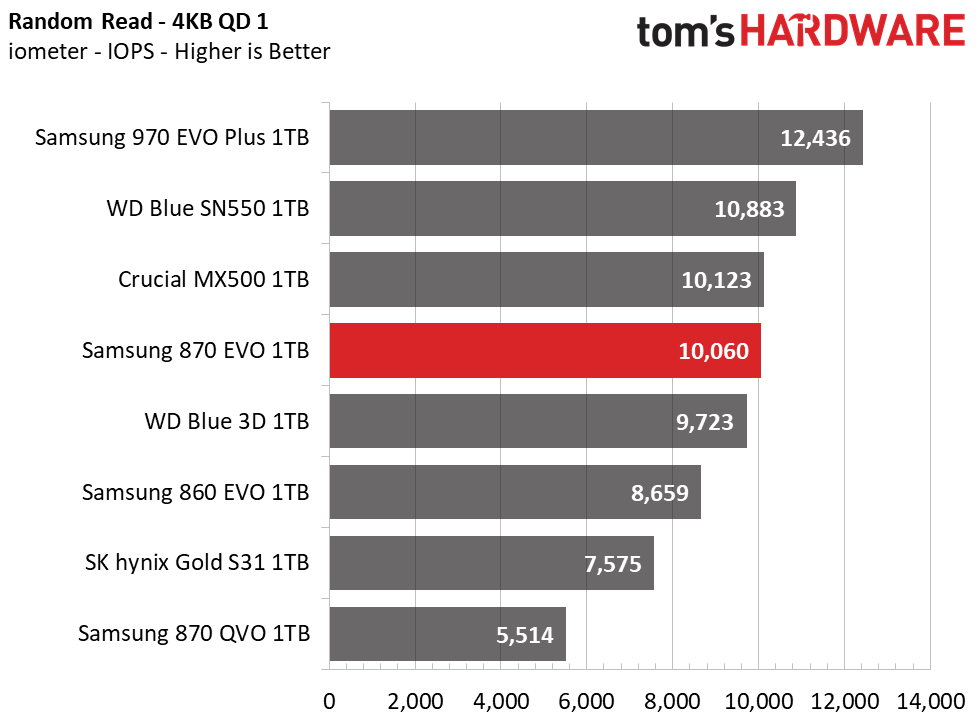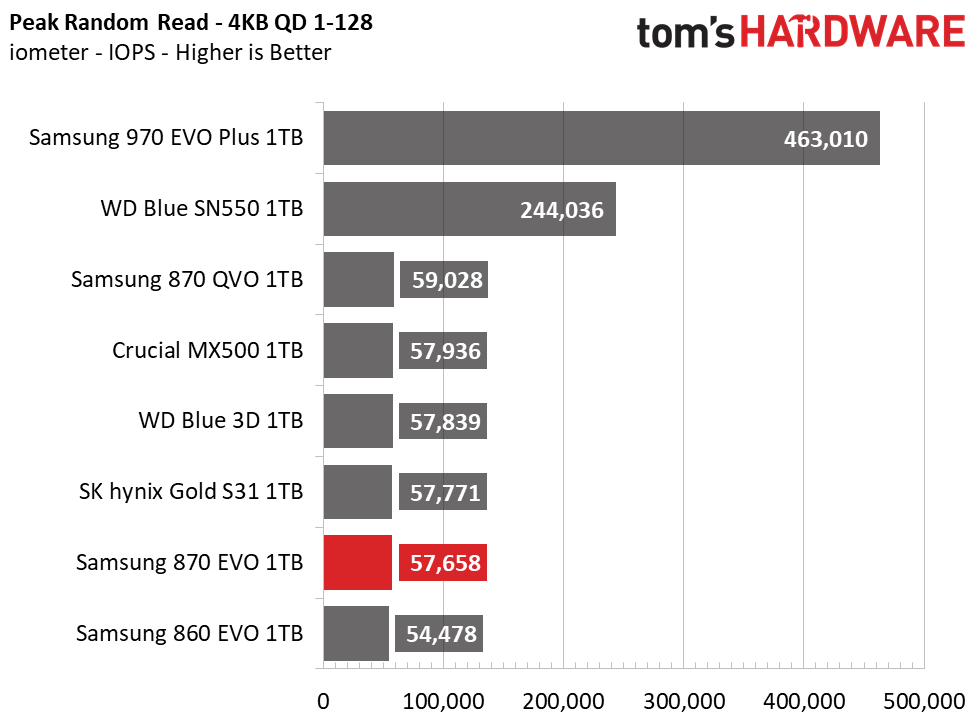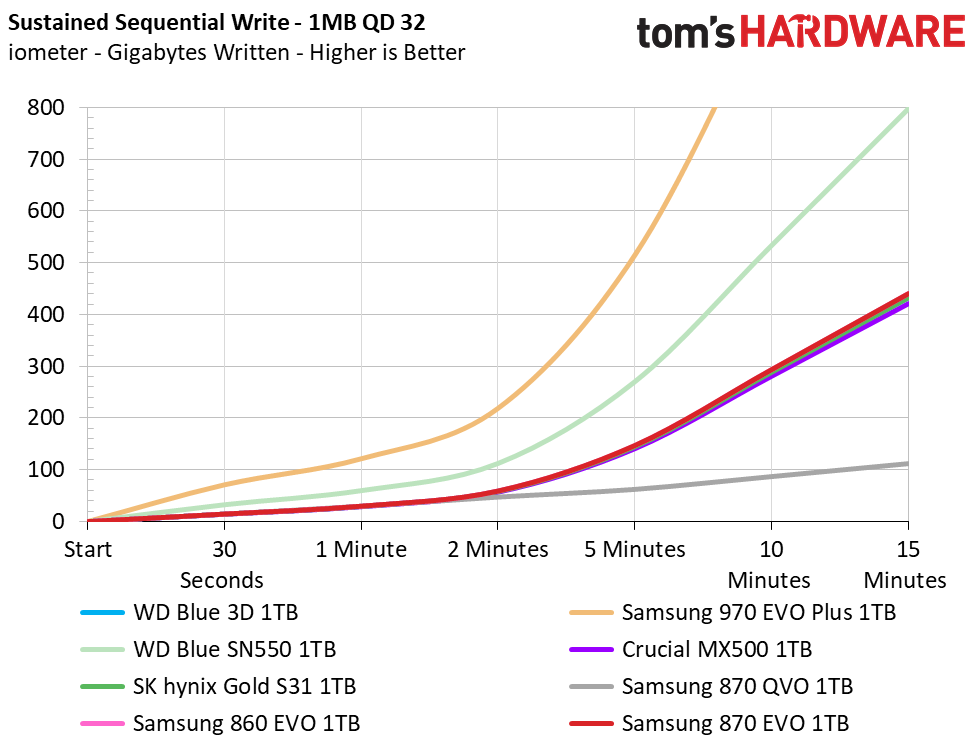Why you can trust Tom's Hardware
RATING: ★★★★ ½
PROS
+ Reliable and responsive architecture
+ Appealing aesthetics
+ AES 256-bit encryption
+ Capacities up to 4TB
+ 5-year warranty
+ Software suite
CONS
- Premium price
OUR VERDICT
Samsung’s 870 EVO 1TB is one of the most responsive SATA SSDs we have tested. Fast, efficient, and well-backed by Samsung, the 870 EVO is our top choice for a solid SATA SSD.
Get Tom's Hardware's best news and in-depth reviews, straight to your inbox.
Comparison Products
We put the 870 EVO up against its predecessor, the 860 EVO, as well as the company’s 870 QVO, a QLC flash-based SSD. We also threw in some of the best SSDs around, including the Crucial MX500, WD Blue 3D, and SK hynix Gold S31. For good measure, we added Samsung’s 970 EVO Plus and WD’s Blue SN550 to the mix, too.
Game Scene Loading - Final Fantasy XIV
Final Fantasy XIV Shadowbringers is a free real-world game benchmark that easily and accurately compares game load times without the inaccuracy of using a stopwatch.
There isn’t too much variation in performance in this test, but Crucial’s MX500 still managed to beat Samsung. Still, the 870 EVO's fourth-place ranking in total load time shows improvement over the 860 EVO and leads most of the SATA-based competitors in our comparison pool.
Transfer Rates – DiskBench
We use the DiskBench storage benchmarking tool to test file transfer performance with a custom dataset. We copy a 50GB dataset including 31,227 files of various types, like pictures, PDFs, and videos to a new folder and then follow-up with a reading test of a newly-written 6.5GB zip file.


Having scored third place in both the file copy and reading tests, Samsung’s 870 EVO looks to be as fast as it gets for SATA performance. However, it isn’t remarkably better than its predecessor.
Trace Testing – PCMark 10 Storage Test
PCMark 10 is a trace-based benchmark that uses a wide-ranging set of real-world traces from popular applications and everyday tasks to measure the performance of storage devices.






Samsung’s 870 scored well ahead of any of its competition In both the quick and full system drive benchmarks, wiping the floor with the previous-gen 860 EVO in PCMark 10’s tests.
Synthetic Testing - ATTO / iometer
iometer is an advanced and highly configurable storage benchmarking tool while ATTO is a simple and free application that SSD vendors commonly use to assign sequential performance specifications to their products. Both of these tools give us insight into how the device handles different file sizes.












Samsung’s 870 EVO is well rounded, delivering faster performance than most of its competitors. Sequential speeds are pretty much capped by the limitations of the SATA 6Gbps bus. Still, Samsung’s 870 EVO delivers faster random read performance than its predecessor, with 14% lower read latency at a queue depth (QD) of 1 being a nice step forward.
Sustained Write Performance and Cache Recovery
Official write specifications are only part of the performance picture. Most SSDs implement a write cache, which is a fast area of (usually) pseudo-SLC programmed flash that absorbs incoming data. Sustained write speeds can suffer tremendously once the workload spills outside of the cache and into the "native" TLC or QLC flash. We use iometer to hammer the SSD with sequential writes for 15 minutes to measure both the size of the write cache and performance after the cache is saturated. We also monitor cache recovery via multiple idle rounds.





Unlike lower-capacity SATA SSDs, larger drives (1TB and up) have great sustained write speeds. Outperforming its predecessor by just a hair, Samsung’s 870 EVO falls in line as the fastest SATA SSD in the bunch. Impressively, our recovery rounds revealed that the drive operated at its full write performance every time.
Power Consumption and Temperature
We use the Quarch HD Programmable Power Module to gain a deeper understanding of power characteristics. Idle power consumption is an important aspect to consider, especially if you're looking for a laptop upgrade. Some SSDs can consume watts of power at idle while better-suited ones sip just milliwatts. Average workload power consumption and max consumption are two other aspects of power consumption, but performance-per-watt is more important. A drive might consume more power during any given workload, but accomplishing a task faster allows the drive to drop into an idle state more quickly, ultimately saving energy.
We also monitor the drive’s temperature via the S.M.A.R.T. data and an IR thermometer to see when (or if) thermal throttling kicks in and how it impacts performance. Bear in mind that results will vary based on the workload and ambient air temperature.





Samsung’s 870 EVO shows similar efficiency to the 860 EVO, consuming roughly the same power during our 50GB file copy test. But, with peak consumption measuring in at over half a watt less, it’s consumption is much better regulated. Idle power consumption also remains low, sipping little power in its standby power states. These all make for cool operation, and the SSD stayed well within its thermal envelope throughout our testing with no signs of throttling.
MORE: Best SSDs
MORE: How We Test HDDs And SSDs
MORE: All SSD Content

Sean is a Contributing Editor at Tom’s Hardware US, covering storage hardware.

